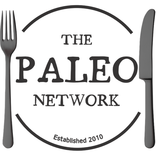Olive oil is one of the healthier oils around, because it’s full of nutrients and antioxidants. Using high quality ‘extra virgin’ olive oil is pretty standard on a Paleo diet. But just how good is the olive oil in your kitchen?
Apparently some olive oils are not all they seem…
Olive oil comes in different categories: ‘Extra virgin’, ‘virgin’, ‘fine virgin’, (normal) ‘olive oil’ and ‘pomace’. ‘Extra virgin’ is the label put on an oil containing less than 1% acid.
Recent research from the Olive Institute (University of California in Davis) revealed that more than half of the olive oils presently on the market are bad quality. Often, despite what they label says, it is not always ‘extra virgin’ olive oil and is sometimes mixed with cheaper oils like hazelnut oils or even soybean oil! Sometimes the oil can be made from overripe and rotting olives. This olive oil does not have any nutritional or health benefits and can even be harmful…
Olives are fruits, making it a very unique oil. Olives are drupaceous (stone fruits), like prunes and cherries. The oil is made with a simple hydraulic press, much like the one we use for fruit juices. This in contrast to the “vegetable” oils, which are made in a refinery with the use of solvents, heat and high pressure – not very natural!

Olive oil is made gently which is why it keeps the ‘extra virgin’ quality, full of antioxidants in the forms of polyphenols and sterols, and vitamins E and K. Olive oil contains large quantities of CoQ10, an antioxidant which is very effective in protecting our heart and fighting chronic inflammations.
Choosing a Good Quality Olive Oil
It’s really important to make sure the olive oil you use is good quality – and really is what it says it is only the label. There are a few ways you can get more certainty about the olive oil you buy:
- Develop a taste for olive oil. There are course and tasting session run, which will help you get a feel for what it should taste like. This will help you identify if the oil you purchase is a good one.
- Buy only brands that are certified by trustworthy organisations.
- If possible, buy directly from the olive growers and producers.
- You might have heard about the refrigerator test: when you put olive oil in the fridge, it should solidify. If it doesn’t solidify, you could be dealing with a mixture of oils. BUT! This test is not 100% trustworthy, as some very high quality olive oils will not solidify.
If you’re not happy with some olive oil that you’ve purchased – return it – and try another brand.
How do you choose a good olive oil and what do you use it for? Do you have any brands, which you’d recommend? Please share your olive oil hints and tips in the comments below!























